Review: BlackBerry Curve 9370 for Verizon
Jan 23, 2012, 5:01 PM by Eric M. Zeman
RIM punches out a low-end Curve smartphone for Verizon Wireless. While the 9370 looks to be capable, it has a hard time keeping up with today's smartphones.
Form
Is It Your Type?
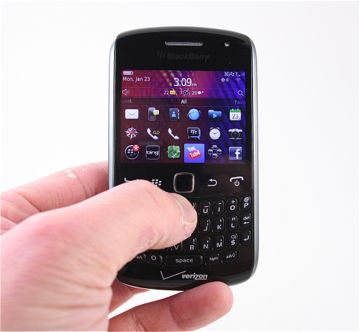
The BlackBerry Curve 9370 falls at the lower end of the BlackBerry range. It is meant to be a smaller, more entry-level phone rather than a full-powered flagship device. It is a diminutive smartphone that packs a strong punch for its tiny size. It includes the famous BlackBerry QWERTY keyboard and a good set of specs. It's a decent entry-level smartphone, but several factors hold the 9370 back.
Body
Wow, the Curve 9370 is small. Aside from the svelte Pearl of yesteryear, I can't think of a smaller smartphone from Research In Motion. The design language is not all that different from its close cousins, such as the 9350. It's a mono-block QWERTY device and borrows heavily from Research In Motion's legacy devices. The review unit I tested had a black front and back, with a dark grey surface outlining the device along the outer edges. It has an elegant look, though any BlackBerry user will know it is not one of the company's higher-end devices.
The 9370 is thin, light weight, and comfortable in the palm of you hand. I was easily able to grasp the device in my hand and wrap my fingers all the way around. It doesn't feel as dense as the Bold models, and the quality of the materials isn't as good, either. It manages to avoid feeling cheap. It will easily fit into any pocket.
The layout of the controls will be familiar to any BlackBerry owner. The display measures just 2.4 inches and makes up about 50% of the 9370's front surface. The navigation controls are below the screen. Unlike the Bold series devices, the Curve 9370 does not have a touch screen.
The 9370 uses the standard BlackBerry controls: Send key, BlackBerry key, trackpad, Back Key and End/Power key all placed in a row, The optical trackpad is quite good. It has a pleasant shape and since it stands up just a bit from the surface of the 9370, it's easy to find. It's a bit on the small side, however. My fatter thumbs needed time to adjust, but RIM offers sensitivity settings so users can adjust the trackpad's response to their liking.
The other controls are not separate buttons, but are instead flush with the surface. There are no physical clues to let you know which one you are touching. You simply have to adjust to their placement until your muscle memory develops. The action of all four buttons is quite stiff. You really have to press each button hard to get it to react. While this delivers a satisfying "click" it also leads to fatigued thumbs.
The Curve series' keyboards are wholly different from those that appear on RIM's Bold and Torch devices. Where the Bold and Torch keyboards are finely crafted masterpieces, the Curve's comes off feeling a bit low-end. The keys are relatively flat and don't have much character to them and the entire keyboard is very compact. It took my thumbs a while to adjust to the small size of the keyboard, though I imagine it will be very friendly to the smaller fingertips of teens or female users. The action is a tad on the stiff side, but I rather like that in this keyboard. The travel and feedback are satisfying.
Controls along the edges of the 9370 are kept to a minimum. The volume toggle, voice command key, and user-assignable action key are all on the right side of the 9370. I don't like the feel of them at all. They are thin humps that just out from the side of the phone and just don't have a pleasing sensation under the thumb. However, they are easy to find and use, and the travel of the keys is quite good.
On top, the 9370 offers a 3.5mm headset jack and a screen/keyboard lock button. As with most BlackBerries released by RIM in the last few years, this button is entirely flat and built into the top surface. Action and feedback of this button are terrible.
The microUSB port is on the left side of the phone. The memory card slot is under the battery cover. The battery does not need to be pulled in order to swap the card.
In all, the Curve 9370 offers nothing new in terms of hardware functionality, and works well for the most part.
The Three S's
Screen
The 9370's 2.4-inch display is downright puny when compared to most other smartphones on the market. The good news is that RIM has upped the resolution for the 9370 to 480 x 360 pixels. When packed into such a small area, the result is a display that looks sharp and crisp. When set to full brightness, it's enough to blind you. There's no need to set the brightness any higher than about 70%. Using it outdoors is hit or miss depending on what you're doing with it. The black drop-down menus with white text were nearly impossible to read, but the white menu screens were easy to read outside.
Signal
The Curve 9370 runs on Verizon's EVDO 3G network in the U.S. and will roam onto the GSM/EDGE networks of overseas network operators if taken abroad. In my tests around northern New Jersey, the 9370 performed on par with other devices on Verizon's network. The 9370 always remained connected to the network and was able to make voice calls even when it showed zero bars of coverage. Data sessions with zero bars was choppy at best. When under strong network conditions, the data sessions were relatively speedy.
Sound
True to BlackBerry form, voice calls sounded excellent through the 9370's earpiece. Set to maximum volume, I was easily able to hear the 9370 over some really loud music playing in my office as well as during the raucous cheers of a football game in my living room (go Giants!). Clarity was fine, and the voices on the other end sounded warm and present. I didn't notice any interference. The volume and quality of the speakerphone aren't as good as the earpiece. I was still able to hear the phone over the loud music, but only when it was set all the way up, and even then I needed to lean in a little bit. The quality had a bit of scratchiness over the speakerphone, but nothing too terrible. Ringtones and other alerts could be set to extremely loud volumes. The vibrate alert is strong enough for the Curve 9370 to give a decent back massage.
Battery
In a word, outstanding. The device held a charge from Friday afternoon to Monday morning with no problem, despite that I was using it to check email regularly, as well as surf the web, make phone calls, and check my social networking feeds (over both 3G and Wi-Fi). Three days is excellent performance for a modern smartphone. If you're into energy conservation, a device such as the 9370 will help you pare down your electric bill.
Basics
Menus
The Curve 9370 runs BlackBerry 7, which is the same system that shipped on the Bold 9930 last year. The big difference is that the 9370 does not have a touch screen like Bold, so you have to rely on the trackpad for everything.
The home page has the status bar, the notification bar, main screen/wallpaper, and the app tray.
The status bar — where the clock, signal indicator, battery meter, etc. are located — is the top-most element. It offers a tray of tools, such as network controls (Wi-Fi, etc.), the alarm clock, and other basic settings. This feature doesn't work from other screens, only on the home screen.
The notification bar acts similarly to the drop-down notification shade in Android. It lets users quickly get a look at all of the unread messages they may have received. This includes email, SMS, MMS, BBM, Twitter replies/DMs, and Facebook notifications. The app tray is where users will really be able to customize BlackBerry OS 7 handsets. The tray offers five different user-configurable home screens / menus.
The Universal Search tool can be used directly from the home screen to search for pretty much anything on the handset or the web. This includes contacts, web sites, and so on. Type a query for anything on the phone (a song, a file, a contact, etc.) and Universal Search finds it. If what you're looking for isn't on the phone, it offers web-based tools (YouTube, Bing, BlackBerry Maps, etc.) to continue searching.
I've used touch-based smartphones for so long that I found the trackpad difficult to adjust to for interacting with the menus. My instinct is to reach up and press the screen when I want to do something. For new smartphone users coming from a typical feature phone, this will likely not be a big issue, but anyone who is used to a touch device might be better served by a different BlackBerry model.
Calls/Contacts
Pressing the send key opens the phone application and defaults to the call log. If you're not used to BlackBerry OS, you have to remember that the BlackBerry key is your golden ticket to hidden actions and menus. This is especially true in the phone app. With a call in progress, the options presented are similar to what is seen on other devices, including quick access to the speakerphone, mute switch, and so on.
As mentioned earlier, the Universal Search function alone adds a lot of power to the 9370, BlackBerry 7, and how users will interact with their contacts. Being able to type a contact's name from the home screen and go directly into a call or the contact app really speeds up many key tasks.
The contact app also displays recent communications when viewing a contact card. Seeing at a glance when you last called or emailed someone is helpful.
The calling and contact apps are amazingly useful, and work together seamlessly as one in order to make interacting with calls and contacts as painless and easy as possible.
Messaging
You know the drill here. BlackBerrys are masterful messaging machines and offer solid tools for email, SMS, BlackBerry Messenger and so on.
Whether you're a corporate user or a Gmail user, the 9370 handles Exchange, POP3 and IMAP4 accounts with ease. Users can add up to 10 different email accounts to the 9370. It can display HTML email with no problem and swiping left or right on the trackpad will take you to the next/previous email. Options abound, and there are simple controls to perform actions such as replying, forwarding, and so on.
The SMS/MMS client offers threaded messaging, which are defined in text bubbles. Adding any sort of media to outgoing messages is a breeze.
BlackBerry Messenger 6.1 is on board to allow for PIN-based messaging. BBM lets users interact with one another from within select connected applications. RIM has been upgrading this app aggressively and added more features, such as support for animated avatars, the BlackBerry Tag (NFC-based contact sharing), and in-depth control over user profiles.
As for other instant messaging, Google Talk, Windows Live, and Yahoo are supported. AIM isn't. If you add a Gmail account to the 9370, the software automatically sets up Google Talk, which is pretty cool. Ditto for Windows Live or Yahoo email accounts.
On the social networking front, the 9370 comes with official Facebook and Twitter applications pre-installed. Each works well enough to keep users in touch with their circles of friends, family and colleagues. The social networking apps are also integrated into the contact app and messaging functions, making it easier to communicate.
There is also a Social Feeds application that streams status updates and posts from Facebook, Twitter, Google Talk, Podcasts, and user-defined RSS feeds. If you'd like to consume all your social networking in one spot, this app lets you do it.
Extras
Media
Music
The 9370 carries forward the same media player powers that have been on BlackBerrys since 2008.
It's easy to sort through albums, playlists, artists and so on. Once you've chosen to listen to a song, the 9370 automatically displays cover art in a coverflow appearance for the current playlist. This means that while you're listening to the music, you can scroll through your library visually via album cover art.
The music player can be sent to the background and users may listen while doing other things, such as browsing the web. Incoming calls pause music, which resumes once the call is disconnected. There are some advanced options, but not too many. There is an audio boost; captions can be turned on/off; and music can be enhanced when the 9370 is used with headphones.
As for syncing, the latest version of BlackBerry Desktop manager is helpful for stuffing the 9370 full of your favorite playlists. It can add songs via USB cable or Wi-Fi.
The media player also has access to Slacker Radio, Verizon's Music Store, V CAST Song ID, and VZWTones.
Video
The 9370 comes loaded with a number of video features. First, there is a dedicated video application that can play sideloaded or captured content. Verizon's V CAST Video streaming service is on board if you don't mind paying extra for it ($10/mo). There is also a YouTube application for managing and interacting with your YouTube account.
Nice as these options are, they don't make up for the fact that the 9370's screen simply isn't meant for consuming video. I'd never think to watch a movie on it, even though the video content I sideloaded looked really good on the 9370's solid display. It's just too small.
Camera
Camera
The 9370's camera and gallery software are also carry-overs from the Bold 9900/9900 line, which carried-over the camera and gallery software from devices released in 2010. We're talking old camera software.
Leaving the side convenience key set to launch the camera is the best and fastest way to get at it. It launches in perhaps a second or so. The 9370 has a 5 megapixel camera with fixed focus and an LED flash.
The physical button can be used to take pictures, as can pressing the optical trackpad. Some basic options can be controlled from the viewfinder without calling up a separate menu. The shooting mode can be changed, which includes a wide list of options (auto, face detection, portrait, sports, etc.).
When you want to take a picture, the 9370 responds pretty quickly. It shoots and saves pictures in about a second, which is as good as you can expect from a phone.
Gallery
The BlackBerry 7 camera software puts a thumbnail of the most recent shot in the lower left corner of the viewfinder. This means you can see the picture you last shot and jump to the gallery from the camera if you so choose.
The 9370's gallery app comes across as rather ho-hum compared to some of the competition. Pictures can be viewed in a grid. From the main gallery view, pictures can be selected, moved, shared, and all that you expect. You don't get any fancy animations or cool behaviors.
Once you open a picture, you can zoom through the entire gallery by swiping across the trackpad in either direction. Editing features are limited to rotating, cropping, and zooming. Pictures can be shared via email, MMS, Bluetooth, Twitter, GoogleTalk or Facebook.
Photos/Video
Photos
Images I captured with the 9370 were decent enough to look at, but few of them were excellent. Indoor shots showed a lot of grain and soft focus. Outdoor shots were more accurately in focus, and white balance was fine. The flash is pretty bright, but doesn't have a lot of range. You'll easily capture Facebook-worthy shots and won't be embarrassed to share them — at least as far as the quality of the image is concerned.
Video
The Curve 9370's maximum video capture resolution is a lowly VGA (640 x 480 pixels). With a 5-megapixel sensor, RIM could easily have enabled this device to shoot at 720p HD. VGA resolution is an insult to today's smartphone buyer. It's no surprise at all that the quality of the video capture with the 9370 is sorely lacking. It is full of grain, exposure is off, and focus is seemingly a concept with which RIM's engineers must be completely ignorant.
Browse/Customize
Browser
The BlackBerry browser is a capable piece of software, though it still manages to fall short of the experience offered by Android, iOS, and Windows Phone 7. I thought web sites were generally quick to load over Verizon's 3G network. Performance improved drastically when surfing via Wi-Fi. The real deal-killer in my opinion is the lack of a touch screen. Relying on the trackpad for web site navigation is irksome at best for long browsing sessions.
Customize
Because BlackBerrys are intended for business users, they offer far more controls, tools, and options than any consumer will ever bother to explore. The basics, such as wallpapers, ringtones (and ringer profiles), themes, fonts, etc., are all handled easily with the settings tools, which have been broken down in to easier-to-manage groupings.
The home screen can also be customized to a certain extent. It's not as vastly customizable as an Android handset, but users can populate the five different screens with a number of apps, shortcuts, and so on.
Extras
Apps
The Curve 9370 ships with a decent number of applications on board, including the latest version of BlackBerry App World. BlackBerrys may not have the hundreds of thousands of applications that the Android and iOS app stores do, but there are still plenty of apps available. The small screen and lack of touch screen making navigating App World a bit tedious, but it works. I found the app updating process to be painfully slow on the 9370, with frequent crashes during the update process. You can also add software from sources other than App World, such as downloading apps directly from Google.
Bluetooth
The Bluetooth functions of the 9370 worked perfectly. Pairing with headsets, speakers, other phones and PCs was a snap. Call quality through mono Bluetooth headsets was OK. Quality of music through stereo Bluetooth speakers was pretty solid. Passing files back and forth between other handsets or computers was not a problem.
Clock
Press the screen lock button, and the time is visible in digital form at the top of the display. It's not very large. I wish the 9370 had a bigger clock — but a bigger display would be a heck of a lot more helpful. Alternately, you can set the 9370 in "bedside mode". This essentially assumes that you're going to place the 9370 on a nightstand within arm's reach when you're in bed. It will show the clock and let you interact with the alarm. Bedside mode can also be activated when the 9370 is charging, which means the clock is visible any time the 9370 is plugged in. Bedside mode isn't very convenient for quick time checks, however.
GPS
The 9370 is pre-loaded with BlackBerry Maps. It does an acceptable job of mapping directions from point A to point B. The 9370's GPS radio was highly accurate, and able to locate me quickly and to within about 20 feet. If you want Google Maps, you'll have to download it directly from Google's mobile web site. The 9370 also ships with Verizon's $10/month VZ Navigator software. Verizon's software outclasses BlackBerry Maps by a mile but for an obvious cost.
Wrap-Up
The BlackBerry 9370 from Research In Motion excels at the cell phone basics: The battery life is excellent, the signal performance is very good, and voice calls sound loud and clear. As a piece of hardware, the controls are mostly good with a few exceptions (icky-feeling side buttons, stiff keys). The screen is way too small for me, but the 9370 is a small phone meant for smaller hands and smaller needs than mine.
The BlackBerry experience is aging rapidly. I have no patience for the time it takes to use the trackpad to interact with the user interface on this non-touch smartphone. It slows down everything. I want to touch apps, contacts, or actions and see things jump to life in an instant. Though they are costlier, the Bold 9930 or the Torch 9850 are better choices if you absolutely must have a BlackBerry — if for no other reason than that they add touch powers.
But, the real caveat here is that RIM will have an all-new operating system on its phones in the next seven or eight months. There's little chance a device such as the 9370 will be updated, leaving you with an outdated device.
The Curve 9370 costs $99, has a VGA video camera and doesn't include a touch screen or 4G. You can get a 4G Android smartphone with a large touch screen for less.
Bottom line: Unless you are hooked on BlackBerry, need BlackBerry Messenger, and need the smallest BlackBerry out there, spend your $99 on another smartphone.

Comments
No messages


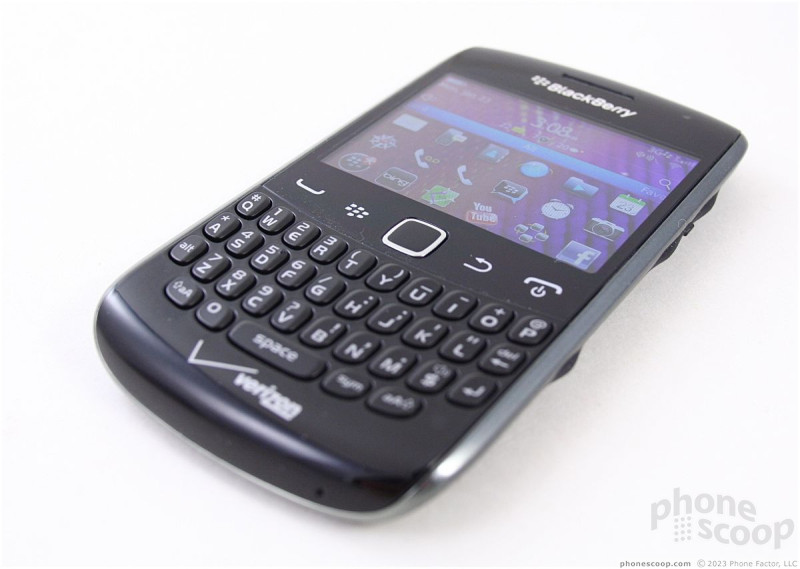












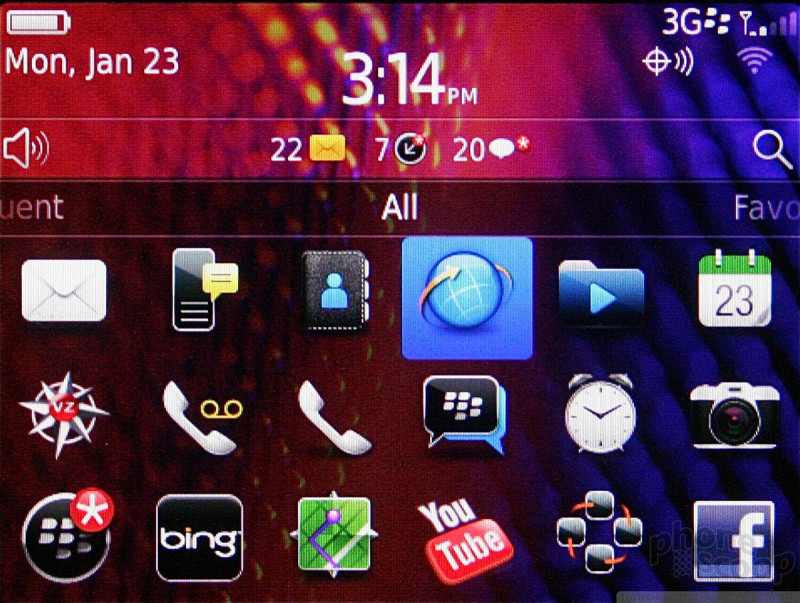





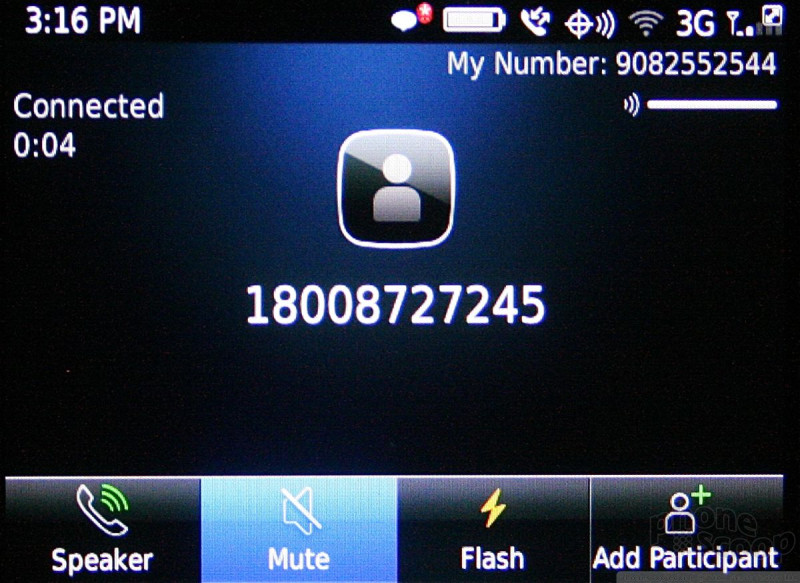






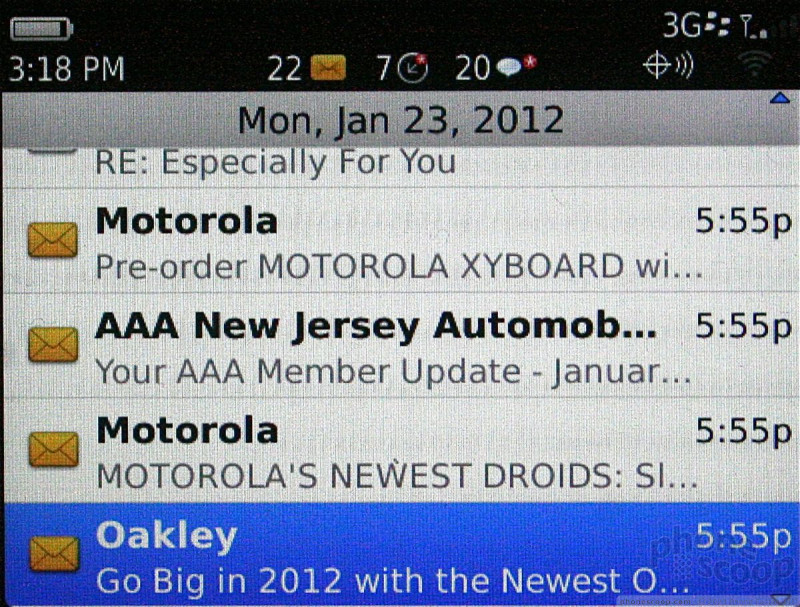




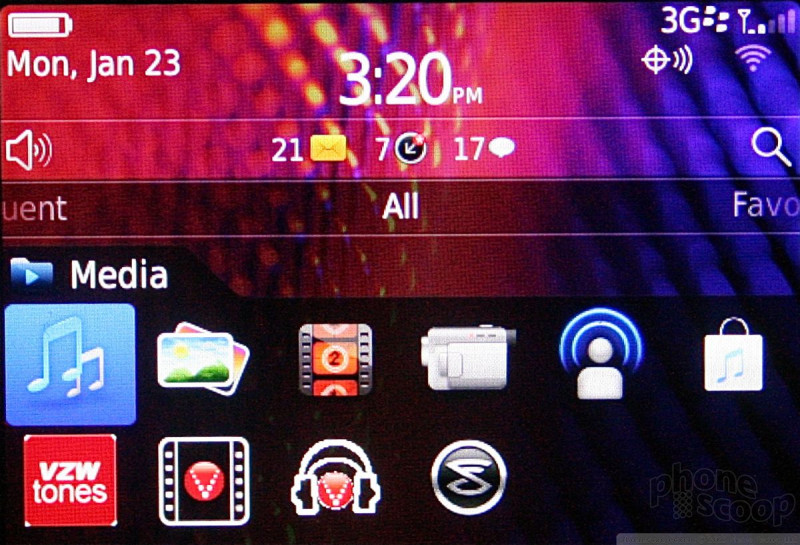





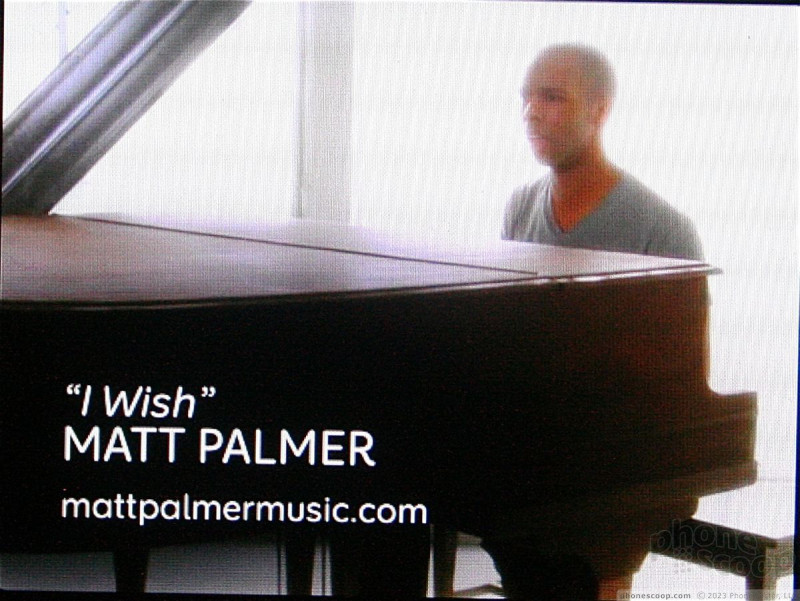


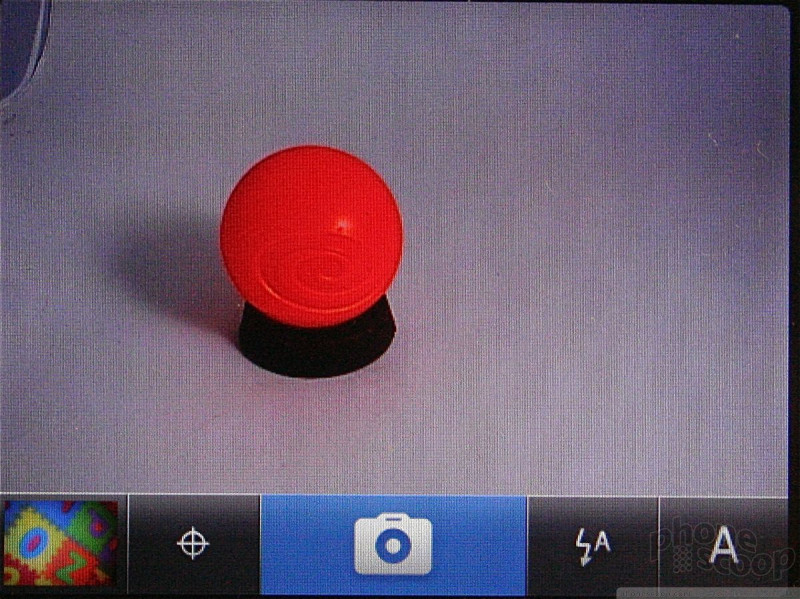




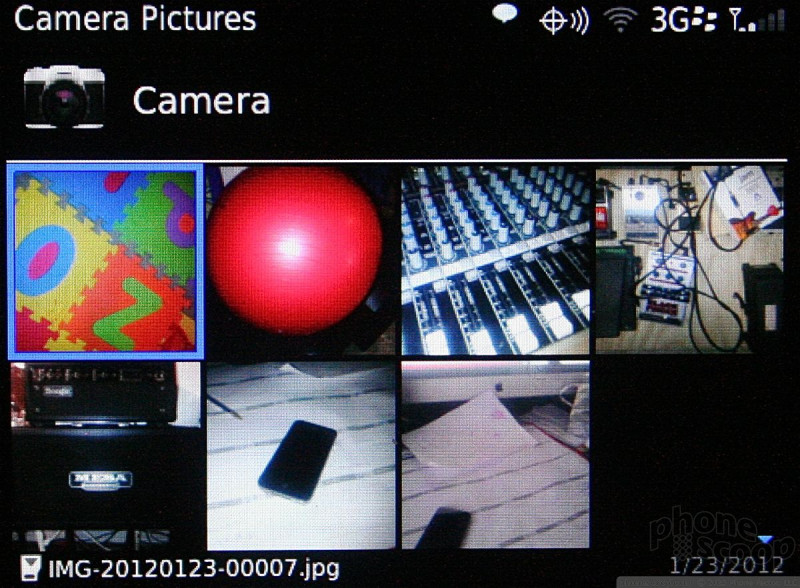



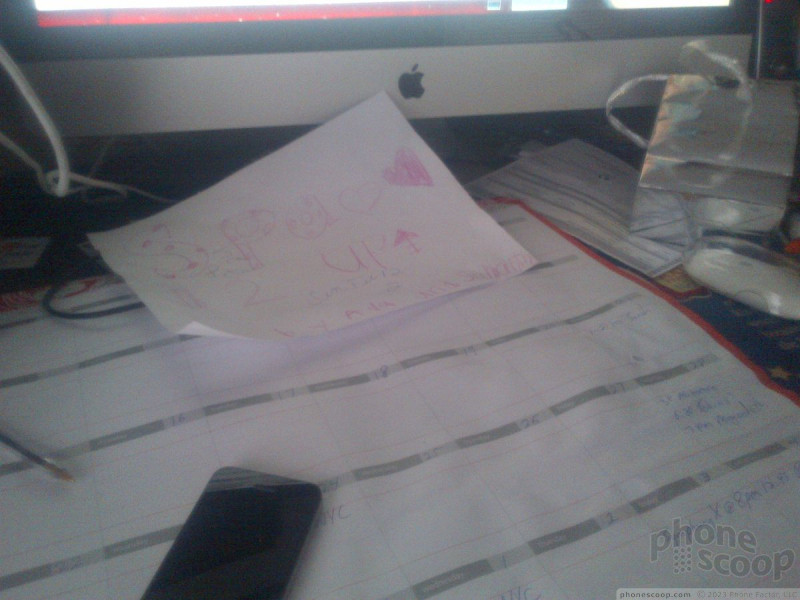












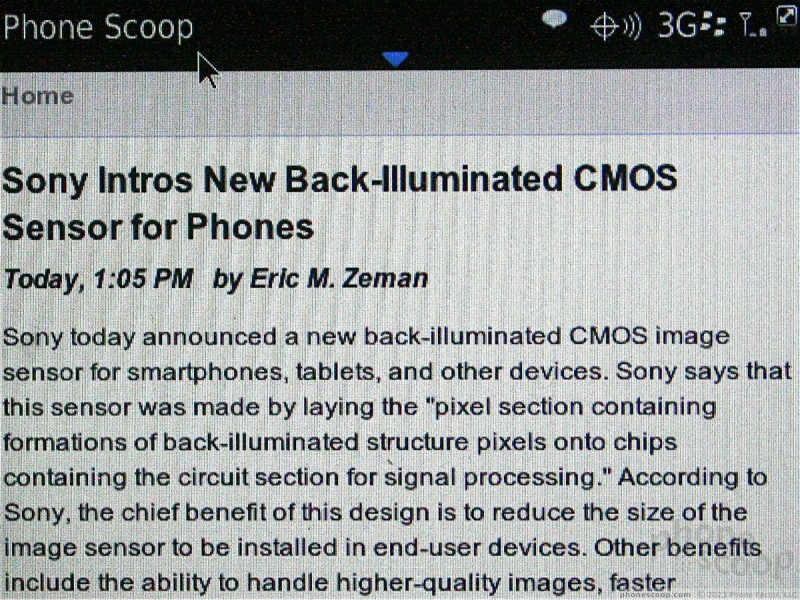



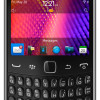 RIM Debuts the BlackBerry Curve 9350, 9360, 9370
RIM Debuts the BlackBerry Curve 9350, 9360, 9370
 BlackBerry Curve 9370
BlackBerry Curve 9370






